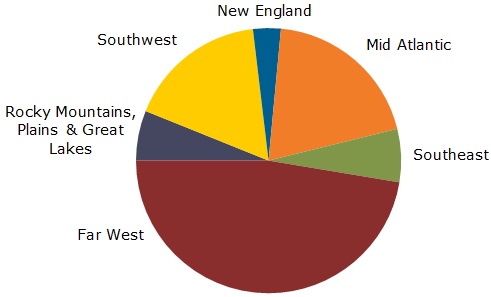With a surge in installations in the past three years, the U.S. has joined a small group of nations with 10 gigawatts or more of solar photovoltaic capacity, according to figures released today by the industry watcher NPD Solarbuzz.
Despite having birthed modern PV technology in the 1950s, the U.S. has long been playing catch-up in deploying solar power. Germany, the runaway leader in capacity with some 32 GW as of the end of 2012, hit 10 GW back in 2009.

The two other countries that have reached the mark are Italy, which had 17 GW as of the end of 2012, and China, which only recently made it to 10 GW. You can expect Japan to join the 10 GW club in the coming months, too; a generous feed-in tariff there has made it the hottest market in the world – 1.5 GW went in during the first quarter of this year alone.
The recent growth in U.S. installations outlined in the NPD Solarbuzz report, generally in line with other industry reports of late, is pretty impressive. “Solar PV installations in the US have seen significant growth since the start of 2010; 83% of the 10 GW were completed within the past 14 quarters,” Solarbuzz said.
So progress is being made. Yet given the size of the U.S. – both its population and its economy – and its massive energy use, the numbers rather shrink in significance.
Zachary Shahan over at Cleantechnica has crunched the global per capita installation numbers, and on that list (which Germany still leads), the U.S. plummets to 20th. The U.S. does no better when PV capacity is measured against GDP, dropping to 26th. And even as it revved up installations in 2012, for that year the U.S. was still no better than 14th in per capita new installations.
So why is the U.S. so laggard? Policy, of course. Investment tax credits remain the major tool in the U.S. arsenal, and as a recent Cleantech Law Partners analysis asserted, those “mostly benefit high net-worth individuals and corporations with enormous tax appetites.”
Writing in the July/August 2013 issue of North American Clean Energy, CLP outlined a scenario for aggressively moving the U.S. forward on solar: “With a few swipes of the pen, Congress could change the energy paradigm in the United States forever by enacting a federal renewable portfolio standard, passing a national feed-in tariff, and giving cash-grant incentives for clean energy project owners.”